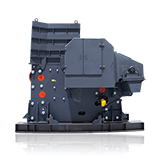7 Tips to Extend the Lifespan of Your Crusher
Stone Crushers play a crucial role in various industries, including mining, construction, and recycling. They are responsible for reducing the size of large materials into manageable pieces. However, like all industrial machinery, crushers face wear and tear, which can reduce their performance and operational lifespan. Proper care, maintenance, and optimization are key factors in prolonging the life of stone crushers. This article provides practical tips to help businesses maximize the lifespan of their crushers, minimize downtime, and reduce maintenance costs.

1. Regular Maintenance: The Cornerstone of Longevity
1.1 Importance of Regular Maintenance
To ensure that crushers operate efficiently and for as long as possible, regular maintenance is essential. A well-maintained crusher is less likely to suffer from unexpected breakdowns, excessive wear, and reduced performance. Scheduled maintenance checks help identify minor issues before they escalate into major problems, thus extending the life of the equipment.
1.2 Key Maintenance Tasks
Some crucial tasks that should be performed regularly include:
- Lubrication: Ensure that all moving parts, such as bearings and gears, are adequately lubricated to reduce friction, wear, and heat buildup.
- Inspection of Wear Parts: Regularly inspect critical wear parts such as hammers, liners, and jaws to check for signs of damage or excessive wear.
- Vibration Monitoring: Excessive vibrations may indicate problems with alignment or wear. Monitoring vibration levels can help identify issues before they cause serious damage.
- Cleaning: Keeping the crusher clean and free of debris ensures optimal airflow and reduces the risk of clogging, which could lead to overheating and reduced efficiency.
1.3 Creating a Maintenance Schedule
A proactive approach is necessary to create an effective maintenance schedule. Establishing a routine that includes daily, weekly, and monthly tasks ensures that all critical components are checked and maintained at appropriate intervals. Keep detailed records of each maintenance session for future reference and to track recurring issues.
2. Optimizing Crusher Installation
2.1 Proper Installation is Key
A poorly installed crusher is more likely to face operational challenges that could lead to premature failure. Ensuring that the stone crusher is properly installed on a stable, level foundation is crucial to preventing excessive vibrations and minimizing operational stress.
2.2 Foundation and Mounting
The foundation of the crusher must be level, solid, and capable of supporting the weight and operational forces generated by the machine. Using vibration isolation pads or damping systems during installation can help reduce vibrations and noise, extending the machine’s lifespan. Additionally, proper alignment of the crusher’s components, including the motor and drive system, is essential to avoid unnecessary strain.
2.3 Checking Installation During Operation
Periodically checking the installation even after the stone crusher is operational is essential. If any component or part becomes misaligned or shifts during operation, it can affect the crusher’s performance and longevity.
3. Material Handling and Optimization
3.1 Selecting the Right Materials
The type of materials processed by the crusher can significantly impact its lifespan. Crushers designed for specific materials will operate more efficiently and last longer. Processing materials that are too hard, too wet, or improperly sized can put excessive strain on the machine, leading to faster wear and reduced efficiency.
3.2 Proper Sizing and Pre-processing
Before feeding materials into the crusher, ensure they are properly sized. Overly large or unevenly sized material can cause blockages, leading to frequent maintenance requirements and excessive wear. Pre-processing materials by reducing their size or sorting them for consistency helps prevent overloading the crusher.
3.3 Managing Material Flow
Ensuring smooth material flow through the stone crusher reduces strain on the machine and allows for better efficiency. Blockages or interruptions in the material flow can lead to excessive wear, motor stress, and overheating. Implementing systems to regulate material flow, such as vibrating feeders or automated controls, can enhance the crusher’s performance and lifespan.
4. Implementing Sound Lubrication Practices
4.1 The Role of Lubrication in Crusher Longevity
Adequate lubrication is vital for reducing friction between moving parts, preventing overheating, and minimizing wear. Crushers operate under harsh conditions, and the bearings, gears, and other components are susceptible to damage without proper lubrication.
4.2 Choosing the Right Lubricants
Not all lubricants are suitable for crushers, as they need to withstand high pressures and temperatures. It's essential to use high-quality lubricants that are specifically designed for heavy machinery. Regularly check lubricant levels and replace them according to the manufacturer’s guidelines.
4.3 Automated Lubrication Systems
For larger, more complex crushers, consider investing in automated lubrication systems. These systems ensure consistent lubrication throughout the machine, reducing the chances of under-lubrication and ensuring smoother operation.
5. Monitoring and Early Detection of Problems
5.1 Vibration and Temperature Monitoring
Excessive vibrations and abnormal temperatures are early indicators of mechanical issues in stone crushers. Implementing vibration and temperature monitoring systems allows operators to detect problems early and take corrective actions before more severe damage occurs.
5.2 Using Advanced Monitoring Technologies
There are now advanced sensor systems available that can monitor multiple parameters, such as load, wear, and motor performance, in real time. These systems can provide operators with data to identify when maintenance is needed, reducing the chances of catastrophic failures.
5.3 Regular Performance Reviews
Regular performance reviews allow operators to assess how well the crusher is performing and identify areas that need attention. Monitoring factors such as throughput, energy consumption, and wear rates can help detect inefficiencies and potential problems early on.
6. Employee Training and Awareness
6.1 The Importance of Skilled Operators
A skilled operator plays a crucial role in ensuring the proper functioning and longevity of a crusher. Proper training in operating procedures, maintenance tasks, and safety protocols helps minimize errors that could damage the machine.
6.2 Training for Preventative Maintenance
Operators should be trained in basic preventative maintenance tasks, such as inspecting key components, lubricating moving parts, and performing initial troubleshooting. This ensures that minor issues are addressed before they become significant problems.
6.3 Safety Protocols
Proper safety training is essential to protect operators and maintain the integrity of the equipment. Safety protocols should include proper lock-out/tag-out procedures, as well as emergency response training in case of equipment failure.
7. Upgrading to Advanced Technology
7.1 Benefits of Upgrading Crushers
As technology advances, new crushers with improved designs and materials come to market. These crushers often come equipped with features that help reduce noise, wear, and vibration, contributing to a longer lifespan.
7.2 Selecting Crushers with Low Maintenance Needs
Investing in modern crushers designed for low maintenance can result in fewer breakdowns and a longer operational life. These crushers often feature better sealing, more durable materials, and more efficient energy usage, all of which contribute to better performance and less wear.
7.3 Retrofitting Older Crushers
In some cases, it may be possible to retrofit older crushers with modern components, such as upgraded bearings or vibration isolation systems. These upgrades can breathe new life into older equipment, extending its useful life at a lower cost than purchasing new crushers.
Prolonging the lifespan of crushers requires a combination of regular maintenance, proper installation, optimal material handling, and advanced monitoring techniques. By investing time and resources in maintaining and optimizing crushers, industries can reduce downtime, cut maintenance costs, and improve overall operational efficiency. Moreover, training operators and investing in advanced technology play a significant role in ensuring that crushers continue to perform at their best for many years.







